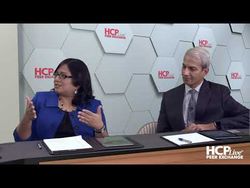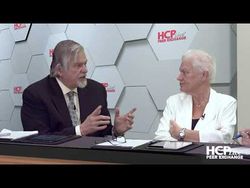Management of Beta Thalassemia - Episode 1
Overview of Beta Thalassemia
Peter L. Salgo, MD: Hello and thank you for joining this Peer Exchange titled “Management of β-Thalassemia.” Now β-thalassemia is a hereditary blood disorder with limited approved treatment options and severe comorbidities. Patients are generally transfusion dependent, and that can lead to iron overload.
To discuss these challenges, I’m joined by a panel, all experts in the field of hematology. And during the next 90 minutes we’re going to discuss therapeutic options and highlight emerging agents for the treatment of β-thalassemia.
I am Dr Peter Salgo. I’m a professor of internal medicine and anesthesiology at Columbia University College of Physicians and Surgeons and I’m an associate director of surgical intensive care at NewYork-Presbyterian Hospital in New York City.
Joining me today are Dr Maria Domenica-Cappellini, a professor of internal medicine at the University of Milan in Milan, Italy;
Dr Thomas Coates, section head of Hematology at the Children’s Center for Cancer and Blood Diseases, and professor of pediatrics and pathology at the University of Southern California Keck School of Medicine in Los Angeles, California;
Dr Farzana Sayani, the director of the Penn Comprehensive Adult Thalassemia and Penn Comprehensive Sickle Cell programs, and assistant professor of medicine at the Hospital of the University of Pennsylvania in Philadelphia, Pennsylvania;
And Dr Sujit Sheth, the professor of pediatrics and director of the Division of Pediatric Hematology-Oncology at Weill Cornell Medical College and an associate attending pediatrician at NewYork-Presbyterian Hospital/Weill Cornell Medicine in New York, New York.
Thank you all for joining us.
So why don’t we start with the basics? What is β-thalassemia and what is its pathophysiology? How do we do this?
Maria Domenica-Cappellini, MD: β-thalassemia is a regulatory anemia due to molecular abnormalities of a gene which is involved in production of hemoglobin: the β-thalassemia gene. It is a recessive defect; so this means that the 2 parents must be carriers to give rise to a child who is affected. And the severity of the disease has a huge spectrum, even in the β-thalassemia setting, due to the different abnormalities of the gene. There are many mutations, so they are different.
Peter L. Salgo, MD: So some are transfusion dependent, some non—transfusion dependent.
Maria Domenica-Cappellini, MD: Exactly. Under the spectrum of the definition of β-thalassemia, the most severe ones are transfusion dependent, and some β-thalassemia patients are non—transfusion dependent. But let’s go to the pathophysiology of the disease, because that is quite important.
Anemia is the driver of the disease, severe anemia. And…this is the consequence of the unbalance between α- and β-globin chains, which actually represent the structure of hemoglobin. The globin to produce a hemoglobin [starts] in early life, of course, in embryos and then in fetuses, and there is a switch from fetal to adult hemoglobin. At birth the majority of hemoglobin is adult hemoglobin composed by α- and β-[hemoglobin].
So if we are dealing with a β-[hemoglobin] defect and the production of β-[hemoglobin] is reduced, the α-globin chain will be free; they don’t combine. And they give rise to ineffective erythropoiesis. Ineffective erythropoiesis means that there is a clear reduction of production of red blood cells.
Transcript edited for clarity.



